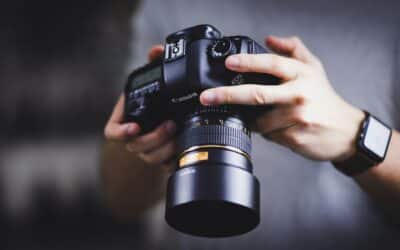Getting started in flash photography can be a little intimidating for some photographers. However it can add such a dynamic look to your images and frees you up from the limitations of only working with the light within a space. Today we’re starting a series today to break down the ins and outs of getting started with flash. There are a few ways you can control the look of your flash photography with your camera functions, and we are going to break those down through this series. Today we’re going to talk about your shutter speed!
Shutter speed and flash
The first thing you need to know is that when you are using flash in your images you are essentially making two exposures in your image. One is for the flash, the other for your ambient light. Ambient light is the natural light within the space. The one thing you need to keep in mind is that your shutter speed is that it is NOT going to change the exposure of your flash on your subject. Because your flash goes off so quickly, the shutter doesn’t affect it (as long as your shutter speed stays below the sync speed which is normally 1/250 or 1/200). So whether your shutter is 1/15 or 1/125, as long as no other light is hitting the subject your flash exposure is going to look the same when it is your main light.
The shutter is going to control two things when using flash: the exposure of ambient light in your image and the motion within the photo.
You control your ambient light by slowing down your shutter speed to allow more light into your lens when it’s open. For example, if you are shooting a reception this can help capture the mood lighting in the space (candles, uplighting, etc).
Your shutter speed is also going to control motion when you have additional light hitting your subject. So if you are in a reception venue a spot light hitting the couple while dancing, you’ll want to keep your shutter speed a little higher. I usually keep it between 1/125 and 1/200. If you slow it down to 1/30 while there is another light source, you will get “ghosting” or blur from your subjects movement.
Alright, there’s the first part for you! Tune in Monday and we’ll talk about how aperture affects the flash in your images.
—
Are you ready to try Iris Works? Sign up for your 30 day free trial now!






Recent Comments